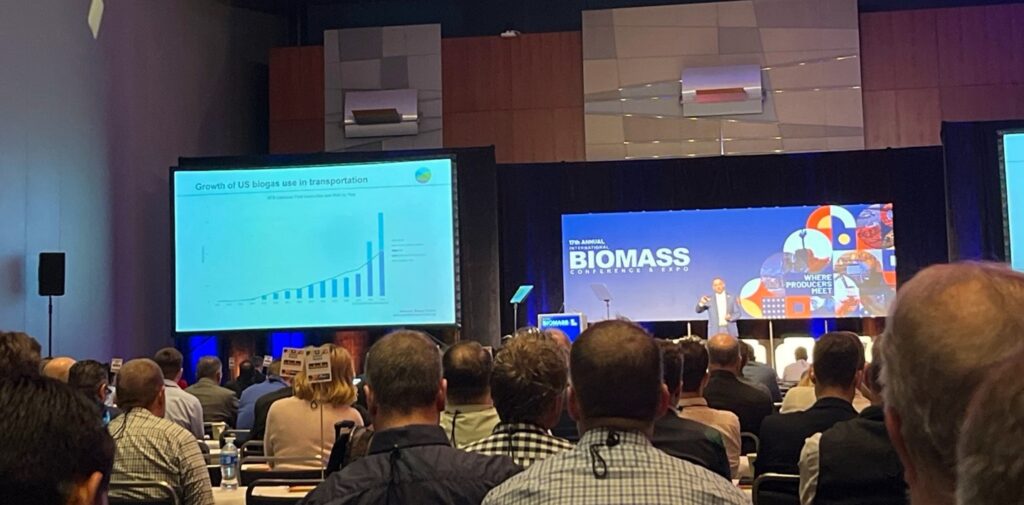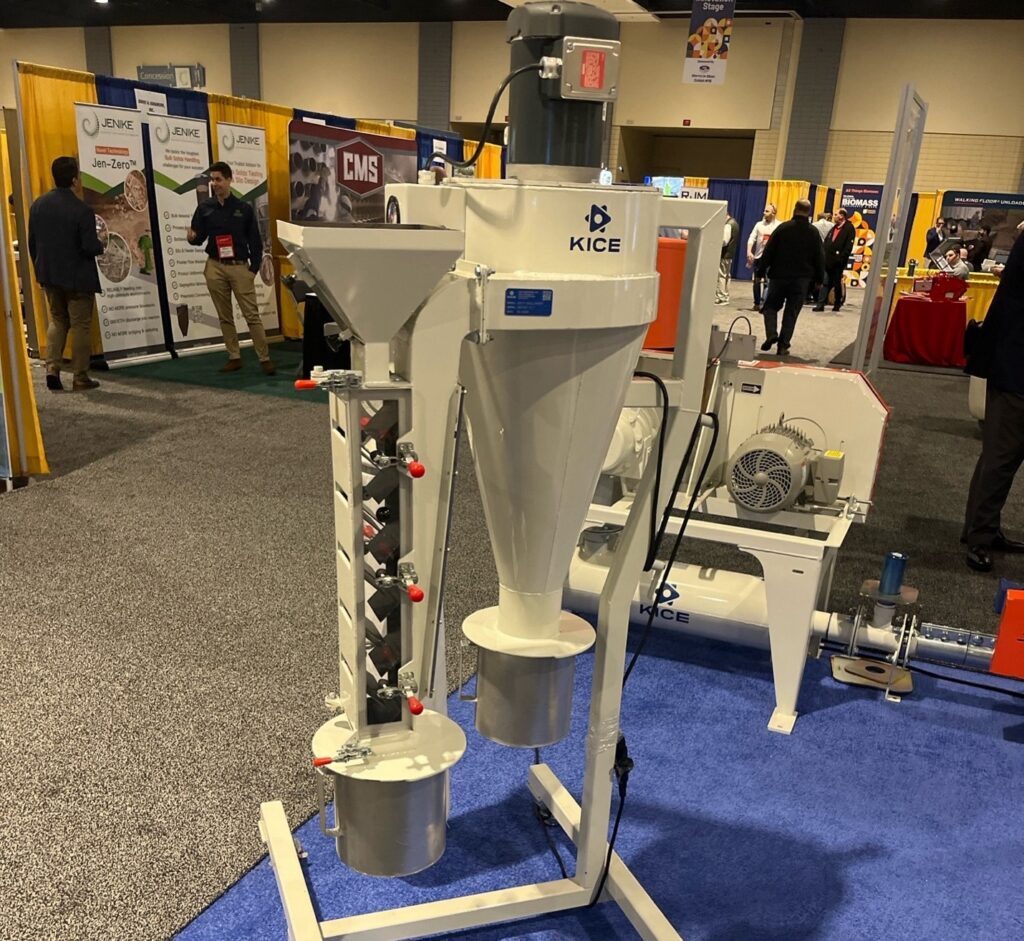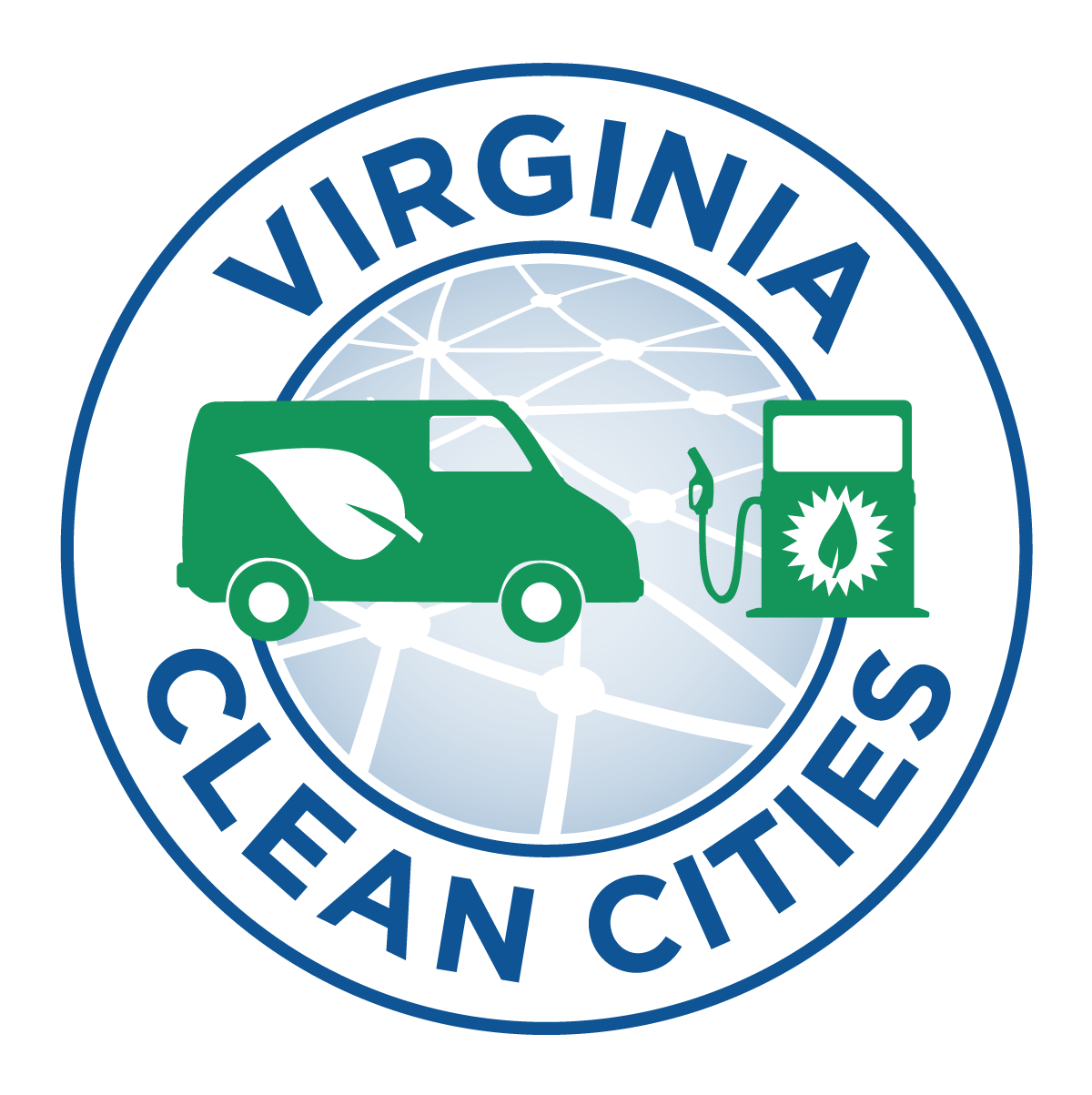
This week Virginia Clean Cities participated in and sponsored the International Biomass Conference & Expo at the convention center in downtown Richmond, Virginia. It was an exciting glimpse into the whole biofuel supply chain – from farm to pellet to processing to the fuel tank!
The day started off with a bus ride. VCC’s Graham Sheridan hopped on Richmond’s GRTC new Pulse bus line and got off at the convention center stop. Happy 50th birthday, GRTC!
To kick off the conference, there was a policy and state of the market update with Tim Portz from the Pellet Fuels Institute, Elizabeth Woodworth from the US Industrial Pellet Association, Patrick Serfass of the American Biogas Council, Paul Winters of the Clean Fuels Alliance of America and Carrie Annand of the American Biomass Power Association. They offered some impressive statistics – in California 50% of the diesel fuel is biodiesel. Serfass said that the biofuel industry is ahead of the target to reach production of 6 billion gallons in per year in 2030. Six billion gallons of renewable domestically sourced fuel requires many fleets and power plants to be ready to accept the fuel. Additionally, he said the next target sectors are the aviation and rail sectors. Planes and trains adopting biodiesel at a wide scale would grow the market in a significant way.
Additionally, Carrie Annand presented about a national focus group her association conducted to test sentiment about biofuel-based power. The upshot: there is a lot of education needed about where power comes from. To address some of the lack of knowledge, she announced that National Bioenergy Day will take place on October 23rd.
Lunch included excellent conversations with several biomass professionals. One was an investor who had purchased a decommissioned power plant and was retooling it to produce Biochar, a very pure form of carbon used in many agricultural applications. It was fascinating to talk with professionals who work with organic material at every stage of production. Suppliers, fabricators and machinists move materials, create pellets, create factories to process into gas.
One great conversation was with Giovanni Henriquez whose company, Jenike, makes silos. He had a scale demonstration of how materials flow down a funnel. They design silos and funnels to not get clogged and stop material flows.

Graham also had an excellent conversation with the team from Southwest Research Institute. They are working on a project with the waste department in San Antonio to turn waste into gas to power the waste trucks. The idea of the waste trucks being powered by the waste they pick up could be a perfect closed loop
Overall, it was a great day of networking and learning. Everyone VCC spoke with was interested to learn about Clean Cities and Communities. VCC left with a sense of the great scale of work ahead to be done to move our economy to domestically sourced renewable fuels.
